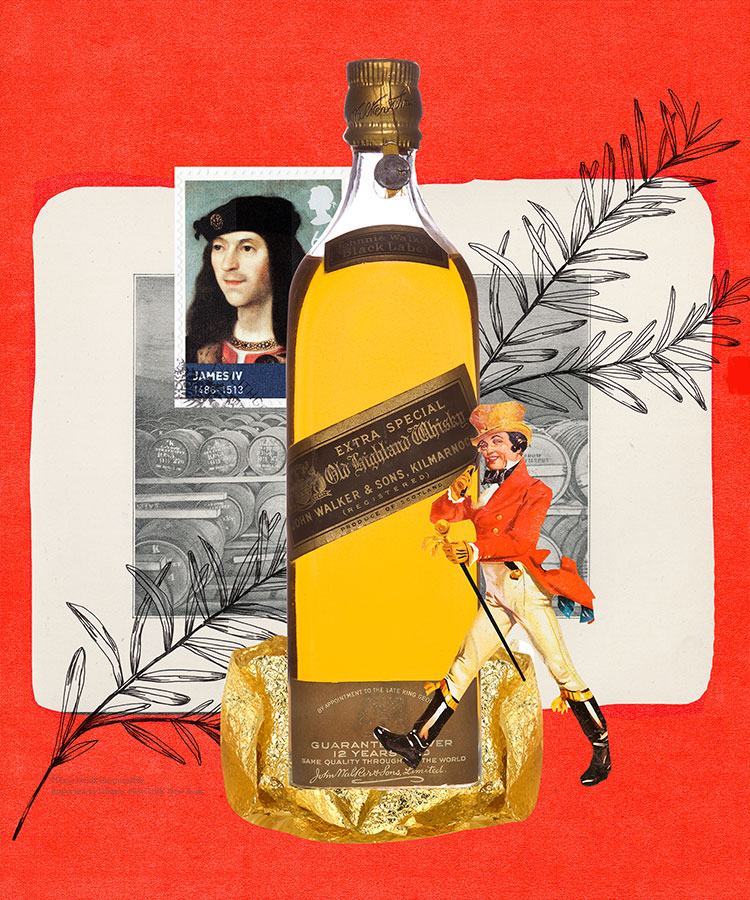This article is part of a cocktail history series, sponsored by Johnnie Walker. Discover more about classic Scotch cocktails here!
The first recorded mention of whisky distillation in Scotland appears in “Her Majesty’s Exchequer” of 1494 — essentially the U.K.’s archaic tax records. It reads: “Eight bolls of malt to Friar John Cor wherewith to make aqua vitae.”
This aqua vitae (“water of life”) first emerged in ancient Mesopotamia and Greece; each made its own style of wine distilled into an early version of brandy. The nomadic Moors would bring their distillation techniques to southern Europe in the 1100s; as their conquests grew wider, so did their methods for making spirit, captivating locals along the way.
“They saw this new wonder — distillation — where the separation of one elemental life force, liquid, into another elemental force, gas, resulted in a holy spirit,” writes Robin Robinson in his “The Complete Whiskey Course.”
In places like Ireland and Scotland, where barley is ample, and grapes are not, fermented grain mash came to be the base of what was then called uisge beatha (the Gaelic “ water of life”). By the 15th century, this predecessor of Scotch was largely produced by holy men in monasteries and cathedrals. Whisky distillation would eventually spread to North America and Asia, with different styles emerging over the centuries.
Today, in a world where just about every country produces its own whisky (or whiskey), Scotch is legally defined, protected, and regulated. It must be distilled in Scotland, of course, using only water, malted barley, and yeast; it must be aged there as well, in oak casks. Scotch can be sold as single malt or single grain. Or, it can take the form of blended malt, blended grain, or blended Scotch whisky — the latter the best-selling category of Scotch across the globe. It took a while to get there, though.
In its earliest days, Scotch more resembled what we know today as gin, rather than whisky, often flavored with local plants, herbs, spices or whatever would help cover up the harsh taste of the raw, unaged spirit. (Scotch wasn’t aged in barrels until the early 1800s.) Still, King James IV was an early fan, loving the whisky that Friar John Cor, a Tironensian monk based at Lindores Abbey in Fife, produced for him. After he was defeated and killed by the English during battle in 1513. The succeeding King Henry VIII split from the Church of Rome in 1533 and dissolved the monasteries, sending all these friars into the “real” world. Luckily, they had one exceptionally marketable skill — making whisky — though many would be forced to do it illicitly and off the books.
In 1644, the country enacted the first tax on whisky distilling but it wasn’t until 1823 that the government figured out how to make legal distilling profitable for all, leading to the first explosion of commercial Scotch. The next year, in 1824, single malt Scotch emerged commercially, though it wasn’t marketed that way (and the term “Scotch” wasn’t yet in play, either — this was simply: “whisky”).
By 1830, Aeneas Coffey had patented his column still, which was revolutionary in its ability to continuously distill the spirit, producing Scotch more efficiently and affordably than the traditional pot still — it tasted much smoother as well. Coffey’s still opened a whole new world of potential to Scotch makers, allowing it to become ubiquitous throughout the country.
“The silent spirit created the blended Scotch we know today,” adds Robinson, “spinning gold from base elements in a way the old alchemists would have appreciated.”
That potential was fully realized by the Spirits Act of 1860, which legalized the blending of grain and malt whiskies — a new era of blended Scotch had begun. If single malt was malt whisky from a single distillery, blended whisky could be a melange of numerous single malt and single grain whiskies from numerous different distilleries. The blended whiskies were intended to be smoother and more easy-drinking than single malts; the blending gave more consistency in taste as well, lending this style to a wider audience. By the end of the decade, there were nearly 50 Scotch distilleries and even more Scotch brands in Scotland.
One such brand was Old Highland Whisky, which was initially released in 1867, and soon became the first internationally famous Scotch. Born in 1805, John Walker had started managing his family’s grocery and spirits store as a teenager — he sold a lot of whisky, but was never pleased with the consistency of single malts. He started blending them in order to achieve the exact flavor profile he desired. This blended Scotch became a sensation in the bustling town of Kilmarnock.
After his death in 1857, his son and grandson, both named Alexander, took a more serious focus on expanding the company, innovating a square bottle (to reduce breakages) and a uniquely angled label. Quickly, they were sending 100,000 gallons per year via railroad from their hometown to the ships destined for every port in the world. By 1920, Johnnie Walker was in 120 countries— it was a phenomenon, all based on a delicious and always-consistent line of blended Scotch whiskies.
This article is sponsored by Johnnie Walker. Keep walking.
